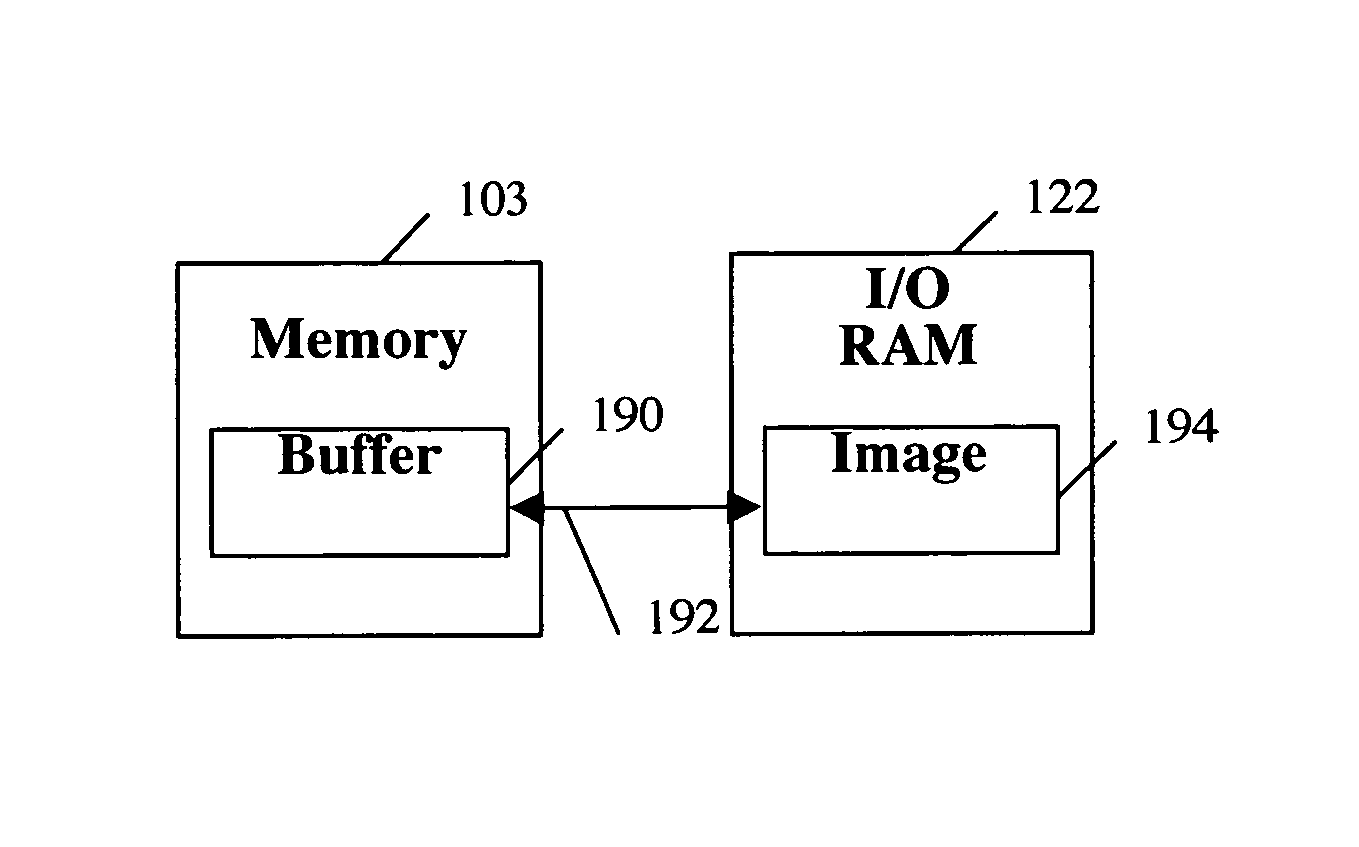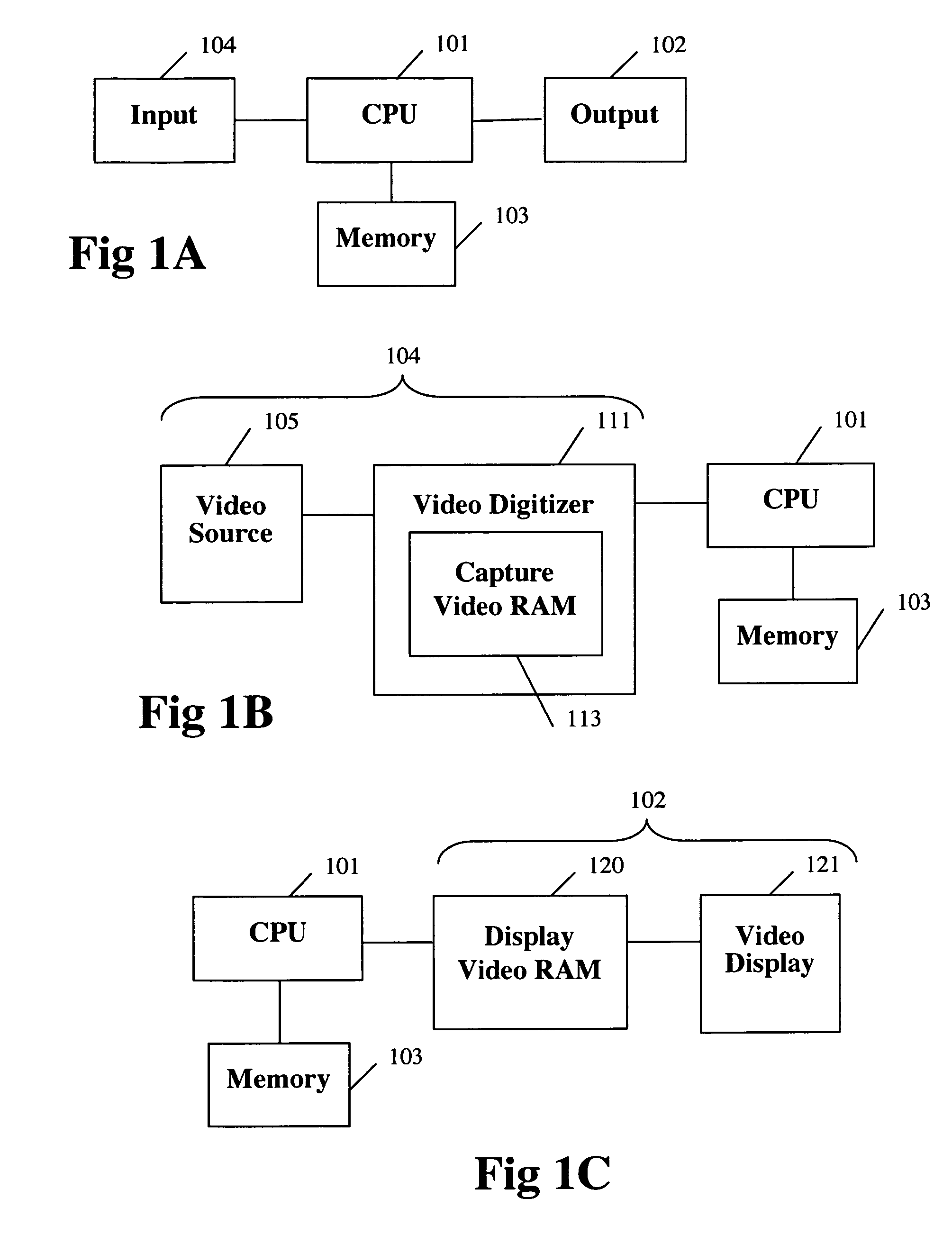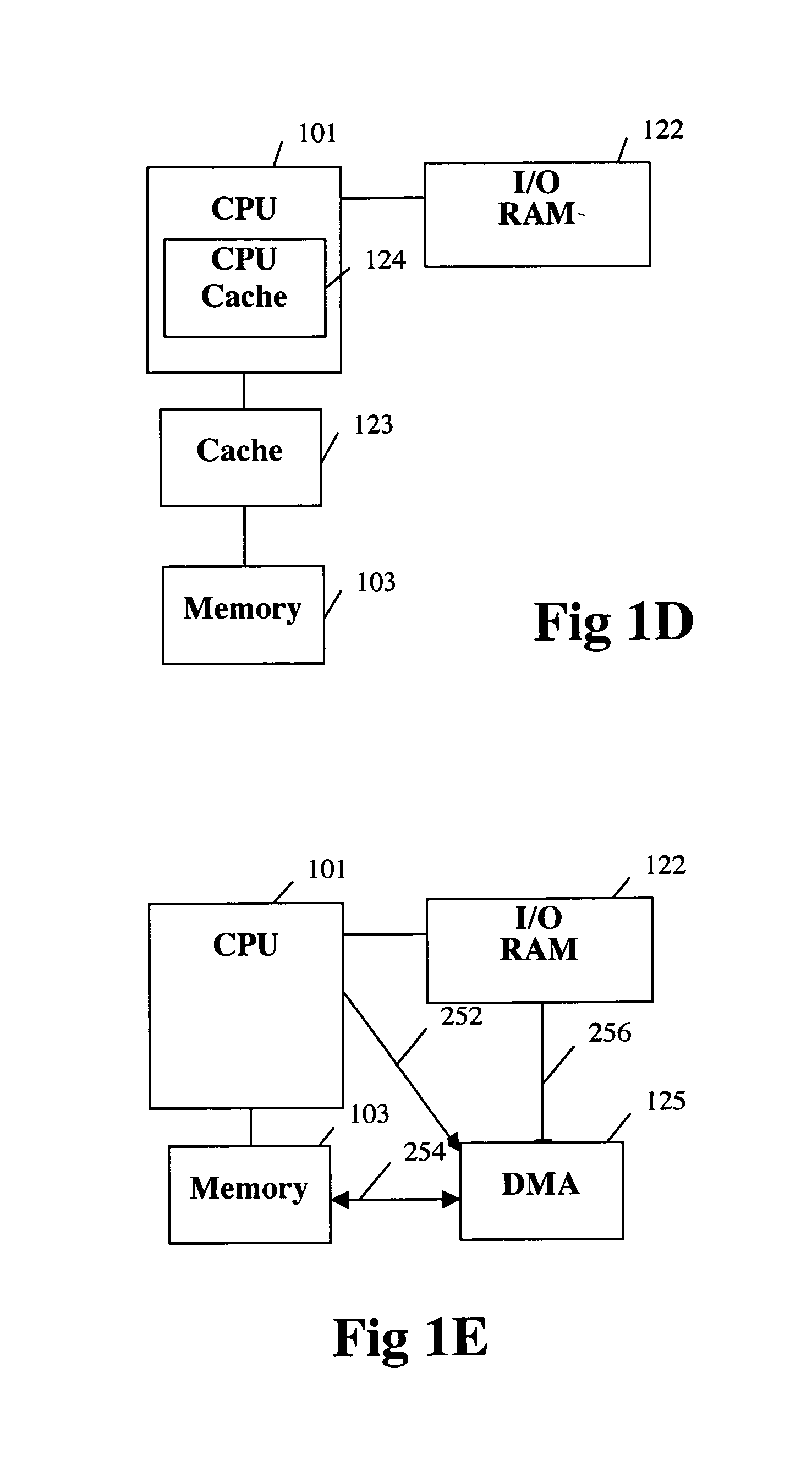Faster image processing
a fast, image processing technology, applied in the field of image processing, can solve the problems of less than acceptable, noise and artificial spikes in the signal, and the inability to transmit video signals with the full resolution and quality of television, and achieve the effect of increasing the compression ratio and more loss
- Summary
- Abstract
- Description
- Claims
- Application Information
AI Technical Summary
Benefits of technology
Problems solved by technology
Method used
Image
Examples
Embodiment Construction
FIG. 1A to 1C—Computer Architectures
[0160]FIG. 1A is a block diagram showing the basic components of a computer, comprising an input 104, a CPU 101, an output 102, and memory 103.
[0161]FIG. 1B shows an embodiment of the computer input 104 specialized to input video data. A video source 105 is connected to a video digitizer 111. The video digitizer 111 converts the analog video signal from the video source 105 to a digital format. Some video digitizers transfer the video data to memory 103 for storage. Alternatively, some video digitizers contain capture video RAM 113 which can store the captured video data on the video digitizer 111 hardware without using memory 103 for storage.
[0162]FIG. 1C shows an embodiment of the computer output 102 specialized to output video data. A video display 121 (also knows as a computer monitor) displays graphical information based on data contained in a display video RAM 120. Programs running on the CPU 101 determine the contents of the display video R...
PUM
 Login to View More
Login to View More Abstract
Description
Claims
Application Information
 Login to View More
Login to View More - R&D
- Intellectual Property
- Life Sciences
- Materials
- Tech Scout
- Unparalleled Data Quality
- Higher Quality Content
- 60% Fewer Hallucinations
Browse by: Latest US Patents, China's latest patents, Technical Efficacy Thesaurus, Application Domain, Technology Topic, Popular Technical Reports.
© 2025 PatSnap. All rights reserved.Legal|Privacy policy|Modern Slavery Act Transparency Statement|Sitemap|About US| Contact US: help@patsnap.com



